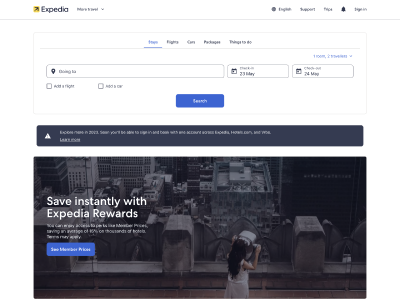SEO for many people can be a nebulous and strange discipline that is all at once nothing and everything. It’s “free” but the full accounting of SEO adds to the overhead costs for multiple other departments of your business when done at even a vaguely enterprise level. SEO can have a massive impact on your business, and yet even professionals with decades of experience in the industry often won’t be able to tell you why without direct analysis.
So, for some who measure by the yardstick of how-quickly-can-I-get-an-answer-about-whats-wrong, SEO investment isn’t worth it, because quantifying its value isn’t black or white with a clear ROAS like some give for paid advertising.
SEO strategies are highly bespoke and should shift as your business strategy shifts and moves; that’s often why the best strategies are frameworks and priorities rather than a GANNT chart of strict timelines for tactical implementations.
A good SEO strategy is about understanding how the business is planning on solving the customers current and future needs, so a good SEO strategy relies on the people in the business to inform that strategy.
So before you even get buy-in or even talk to stakeholders, you should have a good product — a good SEO strategy — in hand.
Before you even talk to stakeholders
Because a good SEO strategy hinges on the business and its plan, get to know your business…and its plan.
Most enterprise level companies will have a 3 or 5 year strategic goal. If you’re in marketing (or any department, really) you should have flow-down goals and KPIs that ladder into that strategic goal. Ask around, you should be able to find it quite easily. In fact, it might be included as a part of your on-boarding when you start.
Once you’ve used that to build your SEO channel strategy, start getting to grips with your processes. How do you request budget? Do you need to do something different if you want a big budget? Or if you need a bunch of other people, potentially new hires for the project, to help you? When do you need to request budget by? What kind of business case do you need to put together for the budget?
These are some big process questions that if you’re new to a company can be overwhelming to tackle. My suggestion? Start small. Ask your manager. From there, poke around some other potential sources for information, like:
- The finance team
- The brand team
- The legal team
- The person in your team that’s worked for the company the longest
- Any business analysts in your team
And once you have a handle on the process of getting your SEO strategy signed, sealed and delivered, it’s about getting folks to back that strategy and endorse it up to the powers that be.
When talking to any stakeholder
When you talk to any other stakeholder, the first impression you want to make is that of trust and respect, on both sides. Interestingly enough, respect often engenders trust, particularly on first meeting someone, so if you’re having trouble figuring out how best to approach a person more senior than you, be as respectful as you can within the culture of your workplace or working arrangement and hierarchy.
The biggest thing to remember is you aren’t the person that matters in this conversation, they are. None of these conversations are about you; they’re all about your stakeholder(s).
No time for jokes
A note from personal experience: jokes and sarcasm rarely translate the way you want them to when first meeting someone, or even after a few interactions. To use an even vaguely joking tone you know the other person will receive the way it’s intended, you’ll want to have worked with them a good long time.
Be particularly wary of emails. The way they’re read is a reflection of how the person reading them is feeling. And feelings and sarcasm rarely get along well for me.
Respect their time
Regardless of how much time someone has free, it’s your job to take up the time you need to make your argument, how it will benefit them, and how it will benefit the company. The time you need and no more.
I always try to get these on-side conversations to 15 minutes or less.
Know what you’re talking about
Step one of respecting their time is knowing what you’re talking about. Know the metrics, the KPIs, the forecasting. Know the business case inside and out. Try and explain it to a loved one — the less familiar with what you do the better — in 30 seconds.
If you’ve nailed your elevator pitch, great. You have something to start with. Then organise the facts from there about how it’ll impact them and make their work lives better.
Anticipate what they’ll ask about
If your stakeholder has any direct reports, or if they have a personal assistant…ask those people questions. What does your stakeholder always ask about? What are their KPIs? What are the hot-button issues that really annoy them? Or the administrative bugbears that always gets them off the wrong foot?
If you’re not that lucky, find out what you can about your stakeholders role and do some constructive daydreaming. Put yourself in their shoes and guess what questions you would ask if you were in that role. Answer those questions.
How will it help them?
Finally, you always want to be clear about how it will help them. How will it help solve a problem they’re having, or how will it help them meet their KPIs. Relationships with stakeholders and teams you work with should be less about what they can do for you and more what you can do to help them. More give and less take.
Respect their opinion
Just because someone is not an expert in your chosen field does not mean they aren’t an expert in their own right. Listen actively to what they have to say, and actively take it on board. Ask specific questions and engage with their opinion. Be generous rather than stubborn with your own position and recommendations.
Treat them like people who exist outside work
Your stakeholders don’t solely exist to do favours for you. While personally I show respect for others by getting straight to the point, once we’ve agreed on next steps and the stuffy business side of things is out of the way, I ask how they’re doing. Their life. Their loved ones. Their hobbies.
They’re people too, and appreciate other people paying attention to them as humans. We’re all creatures of vanity at the bottom of things. We like being paid some attention to. So pay that attention when you can and where it’s appropriate.
When talking to non-digital stakeholders
When you’re working with stakeholders who aren’t in the digital world 9-5, 40 hours a week, it can feel glacially slow. So bite your tongue and grow your patience, all of these relationships are rewarding and will likely teach you something about your own field because they’re looking at it from such a different lens to your day-to-day.
When working with non-digital stakeholders, walk into the conversation in a teaching frame of mind. Be ready to use metaphors and boil concepts down to their most basic components or concepts.
As with other stakeholders, do your research beforehand. In addition to what we’ve discussed previously, find out what their processes are. If they’re planning campaigns now for 12 months in the future, speaking to them about making “critical” changes to a campaign that launches in a month for “SEO reasons” is not going to endear you to that team or stakeholder. But coming to them now about that plan for a campaign in a year might.
Educating stakeholders
I generally find the ideal way to educate is in the moment, with relevant examples to the stakeholder based on who or what we’re talking about. Generally, then, it’s an example I’d have prepared ahead of time when building a business case for them. Sometimes that isn’t always possible, and sometimes you want to lay the groundwork in a number of different ways to build awareness of what it is you do in the organisation from day dot.
1:1 or per small department training
Aside from in-the-moment education, small department training is my preferred method. You’re limiting the “exposure” and embarrassment of asking dumb questions to a circle of colleagues your stakeholder already knows well. Barriers, then, are about as low as you’ll get them.
The only downside here is your time. Moving through small group training can take a lot of it. So if you’re the primary SEO for the company or have a team of only a few colleagues, this may not be the most effective or efficient way to build a baseline understanding of SEO and why it’s important.
Onboarding new staff
Becoming a part of the onboarding process with a self-paced best practices guide or set of video training is one of, if not the, most efficient way of starting to build that baseline. SEO then becomes a part of that person’s standard operating procedure within the company and they carry it with them.
Advocacy network
If getting to be a part of the onboarding process is difficult and doing one-to-one training takes up too much of your time, do a balance of both. When building an advocacy network, find the people who are already knowledgeable and passionate about SEO.
Train them up on your strategy, your way of approaching SEO and your priorities (as well as any of the latest news or changes or shifts in the industry) and then delegate them out back into their respective departments. Keep a regular check in with everyone and build a community internally.
When talking to technical stakeholders
SEOs and development teams have a storied history, and sometimes really don’t get along. I can say, though, I’ve worked with some amazing developers who were keen on learning about SEO and helping us get stuff done because they knew it would help them.
 Know their process and build
Know their process and build
A developer, devops or engineering teams process usually runs to a certain sprint cadence. Maybe fortnightly, maybe monthly, maybe quarterly. Sometimes I’ve even worked with annual release cycles. Know what that is and find a way to work with it. Your stakeholder probably can’t or won’t change that process just for you. Remember, it’s not about you at all in these stakeholder conversations.
Along with knowing how they work, it’s important to understand what a release schedule looks like. Do they need 48 hours for testing and 24 hours for accessibility testing? Do you need to write use cases or requirements for them? What are the processes and approvals surrounding yours and what information do those teams need?
Know what your “goldilocks solution” is
I go into any conversations with the development team assuming I’m not going to be able to execute my ideal solution. I assume we’ll end up finding a compromise, and I go in knowing what my requirements are and willing to ask the developer how they can meet those requirements if not through my ideal solution.
I try and go into these conversations humble because I’ll never know our codebase or library as well as a developer who works in it every day. So while the Angular/Gatsby/React documentation may say to do it x way, because of another API we’re calling we have to do it like z. I go in with no assumptions about what the solution should look like, just what we’re trying to solve for.
When talking to C-Suite stakeholders
It can be intimidating talking to senior leadership. For me the way I moderate that is by learning as much as I can about what they care about ahead of time — that’s where what I mentioned earlier about talking to their team or their personal assistant comes into frame.
 Mirror their language
Mirror their language
SEO can be very heavy in jargon. When talking to anyone, but especially C-Suite, strip that away. Talk in everyday language, but more specifically, talk in their language. Notice how they speak about things. Do they talk about “the competitor landscape” or do they talk about “market share” or “share of wallet”? What concepts are their touchstones?
Notice these things and mirror it back at them as you’re speaking. It’ll build trust and help you get on the same page, because when you use language that’s familiar to them, it’s easier for them to find the concepts they aren’t sure of and have an open discussion. It’ll be easier for you two to build a shared understanding of the benefits of your SEO strategy.
Answer the “so what” in what they care about
Their KPIs are not your KPIs. Senior leadership, more often than not, is looking at the broader picture — they’re figuring out the ways to directly drive that 3-5 year strategy you’re laddering up to. So while they care about the revenue or demand right now they are also looking at the broader picture. The question is — what broader picture? Are they driven by beating their direct competitors? Are they driven by brand reputation? Market penetration?
When you’re sharing the “so what” of your SEO strategy, then, answer it in those terms — and have hard numbers if you can. Instead of saying “incremental organic traffic of 5% year on year” say “increase market share by 15% and create a market opportunity of 32% by the end of the financial year.” Or whatever.
As Simon Sinek says, though, customers don’t buy the what, they buy the why. If you want to truly build a relationship with a stakeholder and get them on-side for not just this conversation, but many conversations down the line, answer the why in terms that resonate with them.
If it’s on fire and you just need to get it done
If things are on fire, make sure it’s not just a fire for you: will this actually have a material impact on the business if it doesn’t get managed at the fastest speed possible? Then go in all cylinders firing.

Share the immediate impact on the business, and quantify it. Say “if we don’t fix this now we could lose a third of peak season revenue and disappear completely from Google search results.” (Yes, personal experience on that one).
Put yourself at their mercy for the duration of the fix. They can call you whenever, wherever. You’ve asked them to potentially work around the clock to get this managed, the least you can do is be available whenever it is they’re working to answer any questions, so they can keep moving.
Once the dire issue is fixed and the fire is out, give credit where credit is due and share up and out the amazing things this team did to save the website. Build up your stakeholder and build up that team. It’s not about you.
Just keep going
If at first you don’t succeed, try, try again. Keep a log. Look back critically and understand where you probably went wrong; it may not be where you expected.
Working with people is probably one of the hardest things about any job, full stop. Even more so when you work in a field that can be seen as either a black box of mystery, smoke and mirrors, or snake oil, depending on the day and the mood the stakeholder is in. So give yourself a little grace and be kind as you’re going through this process of learning how to manage stakeholders and even more than that win people over to your way of thinking. Goodness knows I don’t always get it right.
I keep going though — building empathy and awareness as I have conversations and finding ways to discover commonalities and touchpoints amongst colleagues. And so should you.
Next, read these:




 Know their process and build
Know their process and build Mirror their language
Mirror their language










